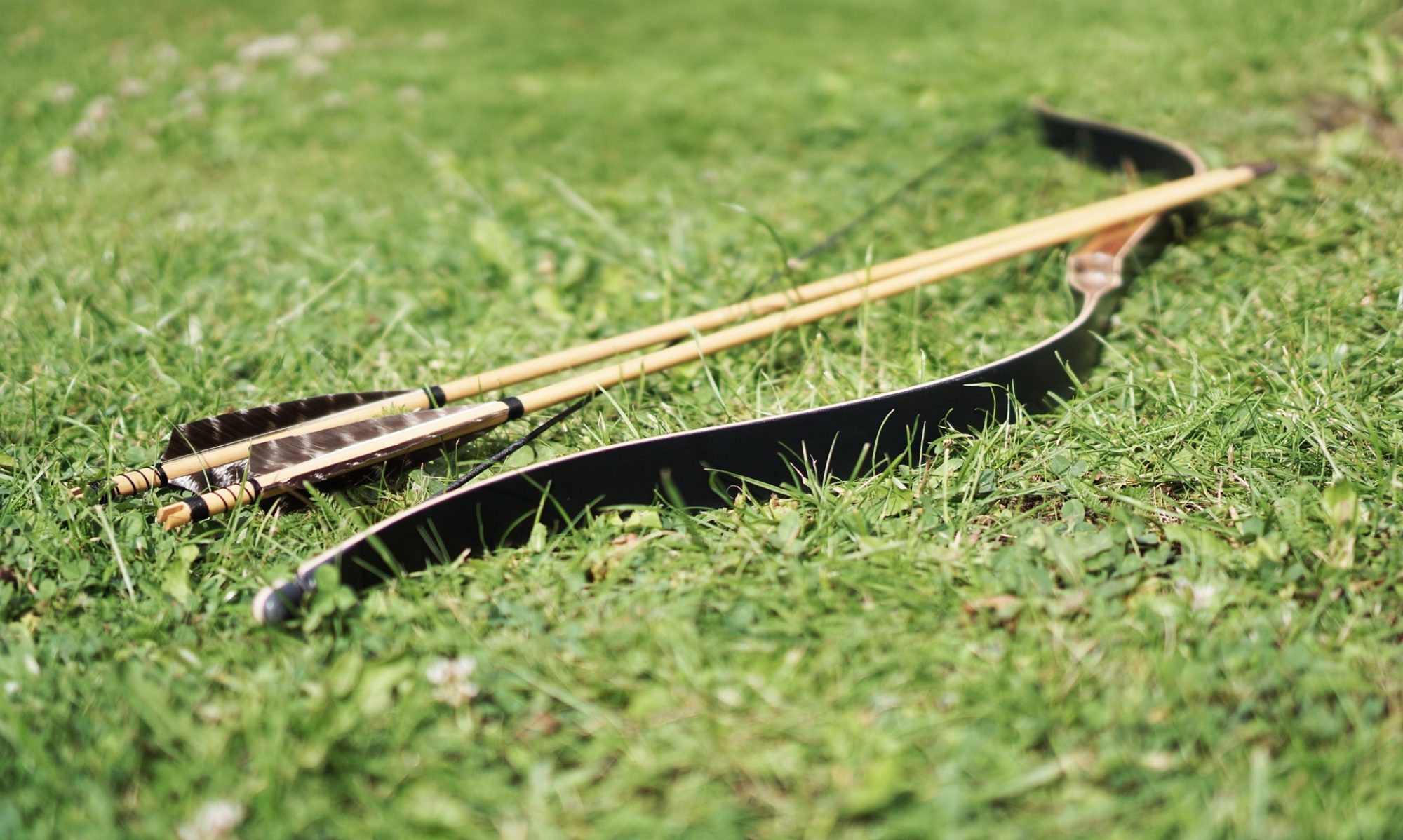“He should next lock his fingers on the bowstring without using an arrow and draw for a time until he is able to lock correctly and can thus grasp, lock, and draw to the best of his physical ability.” – Ṭaybughā
Let’s talk about that thumb draw. You won’t need any arrows for this and don’t worry about the string just yet. First look at the palm of your Draw hand, then tuck the middle, ring, and little fingers into your palm such that the fingernails are hidden from view. Your index finger and thumb will make an “L” shape. Now, bend your thumb and place its tip against the side of your middle finger right in the center of the middle phalanx. Next bend your index finger such that its second crease is covering your thumbnail and you’re pointing at yourself. It is very important to keep the index finger only half bent with its tip pointing away from the hand. Do not wrap the index finger all the way around the thumb. (This would cause you grief later, you’ll see why.) Repeat this a few times until it feels more natural. Refer to the images below.


Now let’s add the string. Put on your thumb ring or guard as discussed above. Grasp the bow properly and hold it in front of you. Take your Draw hand and place it close to (but outside) the string, palm facing down and fingers outstretched. Tuck the middle, ring, and index fingers into your palm as before. Next, hook the thumb around the string and place it’s tip against the middle finger like you practiced. If you are wearing a thumb ring with a groove, now is the time the string should “catch” into that groove. If there is no groove, the string should lay gently against the flesh of your thumb and get “hooked” against the side of the ring closest to the base of your thumb. If you are wearing a leather thumb guard, the string should feel nestled near the thumb’s distal crease (this is also the spot to place the string if you are not going to wear a thumb guard). Once your thumb is comfortably closed around the string, drop the index finger to cover the thumb nail. Your Draw hand should resemble the images below.


A very important note here: Look how the bird’s-eye image shows light coming through the space near the web of the thumb and the string. This is critical. Don’t close your thumb against the hand to “pinch” the string. Keep the thumb low and that space open. That is where the nock of your arrow is going to be later. Also note how the hand is level with the wrist, not bent up or down at all.
Completing the Draw
For the next bit, that large mirror mentioned previously is tremendously helpful. Extend your Grasping hand out from your body until the elbow is nearly locked, then reach up to Lock the string. Pull the Drawing hand back toward the mouth and past it until the tip of your index finger (which should be pointed downwards) would appear to be vertically lined up with your ear lobe. Check that your hands, elbows, and shoulders are all in the same horizontal plane. (The principle of keeping all of the parts of the upper limbs in one horizontal plane appears to have been so important it was repeated multiple times throughout the book and that’s why I’ve repeated it here. This will not feel natural to experienced Western archers who are used to bringing the nock close to the mouth and looking more-or-less down the shaft of the arrow). Next, relax your Draw but keep the Grasping arm outstretched, let go of the string, and repeat Locking and Drawing over and over every day “for a time” until these fundamentals become muscle memory [Footnote 2]. Practicing on both sides is a great idea!
Footnote 2:
Let’s talk about that Grasping arm in more detail. In order to achieve their famed high rate of fire but still be accurate, the Mamelukes were always Sighting on their marks once engaged. To that end, arrows were Nocked while the Grasping hand was nearly fully extended. The reason being that the Grasping hand is supremely useful as an aiming reference and the closer to full Draw the Grasping hand stays, the faster the arrow can be Sighted on target using Ṭaybughā’s method. Also, we are told “that a combatant enters the fray with his left side because it enables him to shoot the enemy from under his shield without exposing himself to the foe.” This reinforces the point of keeping the Grasping arm mostly extended because the shield was worn on the left arm. Bringing both hands to waist level would lower the shield and expose the warrior to injury. Elsewhere, while discussing how to modify the Draw for different physiques he very clearly describes extending and lining up the left arm with the target and locking its joints in a straight line then executing the Draw “from this position.” From these supporting points, I assert the Draw technique of the Mameluke was such that the Grasping arm was kept elevated and outstretched. It was then fully extended moments after Nocking, while the Drawing hand (and arm and back muscles) did the bulk of the work in bringing the arrow to full Draw. Forgive me for giving the topic short shrift because I know the subject of “proper” Draw is as deep as it can be controversial and variations do work well for different archers, but I want to focus only on Ṭaybughā’s methods here.
Grasping (and intro to Drawing) – Locking and Drawing – Nocking and Drawing
